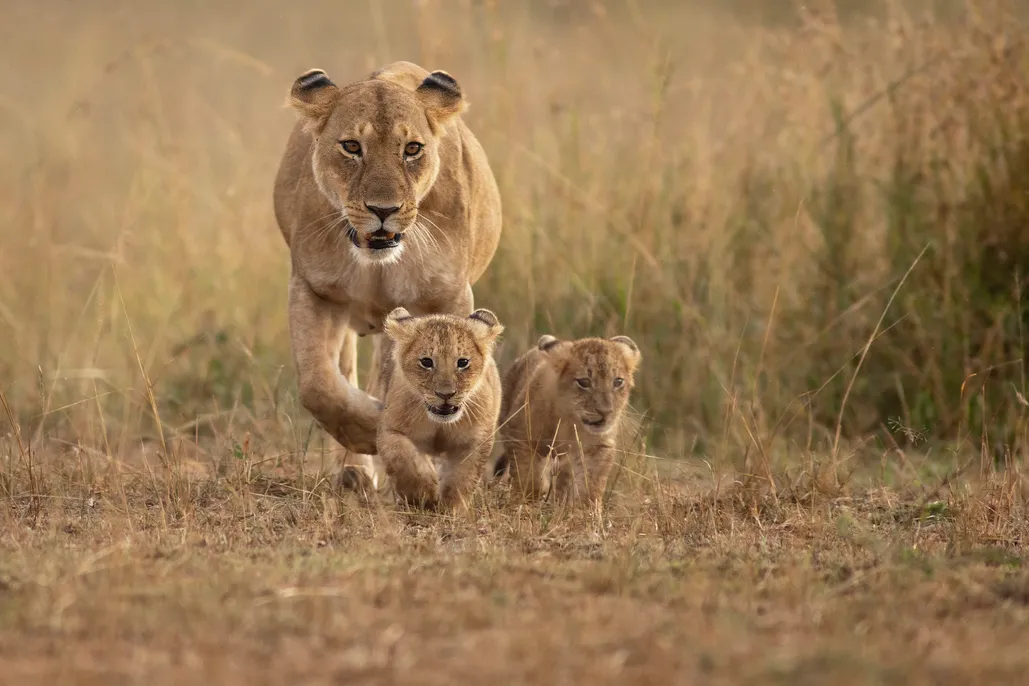The Marvel of Motherhood: A Deep Dive into the Gestation Cycle of the African Lion
African Lion Gestation Marvel. The African lion (Panthera leo) stands as an iconic symbol of strength and majesty in the animal kingdom. As the apex predator of the African savannah, these magnificent creatures play a crucial role in maintaining the delicate balance of their ecosystems; One of the most awe-inspiring aspects of their life cycle is the gestation period, a pivotal stage in the circle of life that ensures the continuation of the lion pride.
Gestation Period Overview:
The gestation period for African lions typically lasts around 110 to 120 days, or roughly three and a half to four months. This period may vary slightly based on factors such as environmental conditions, nutrition, and the health of the lioness. It is during this time that the female lion, or lioness, undergoes a series of physiological changes to nurture the developing cubs within her womb.
Courtship and Mating:
The journey towards lion parenthood begins with courtship. Male lions often engage in elaborate displays of strength and prowess to attract potential mates. Once a pair has formed a bond, mating occurs. Lions are known for their remarkable ability to synchronize reproduction within a pride, often resulting in multiple females giving birth around the same time.
Pregnancy and Physical Changes: – African Lion Gestation Marvel
Following successful mating, the lioness experiences a gestation period marked by significant physical changes. Hormonal shifts trigger alterations in her behavior and physiology. The developing embryos implant in the uterine wall, initiating the growth of tiny lion cubs.
Nesting Behavior:
As the pregnancy progresses, the lioness starts exhibiting nesting behavior. She may seek out a secluded and safe location within the pride’s territory to give birth. This behavior is an instinctive response to protect the vulnerable cubs from potential threats. Lions, unlike some other big cats, do not typically give birth in hidden dens but may choose to deliver in dense vegetation or rocky outcrops.
The Birthing Process: – African Lion Gestation Marvel
Lionesses usually give birth to a litter of one to four cubs, with an average of two or three being more common. The birthing process itself is relatively swift, and the cubs are born blind and helpless. The lioness carefully tends to her newborns, ensuring their safety and warmth. In the wild, the entire pride, particularly related females, may participate in safeguarding the cubs.
Maternal Care and Pride Dynamics:
The lioness plays a central role in providing maternal care to her cubs. During the early weeks, she keeps them hidden from potential predators and introduces them to the pride once they are strong enough. The dynamics within a pride shift as the cubs grow, with the entire group participating in their upbringing. Cubs are gradually integrated into the pride’s activities and learn essential hunting and social skills.
Conclusion: – African Lion Gestation Marvel
The gestation cycle of the African lion is a testament to the intricate balance of nature and the survival strategies evolved over millions of years. As these majestic creatures navigate the challenges of parenthood, they contribute to the vitality and resilience of their species. Understanding the gestation cycle of the African lion not only deepens our appreciation for their complex lives but also underscores the importance of conservation efforts to ensure the continued existence of these remarkable animals in the wild.








